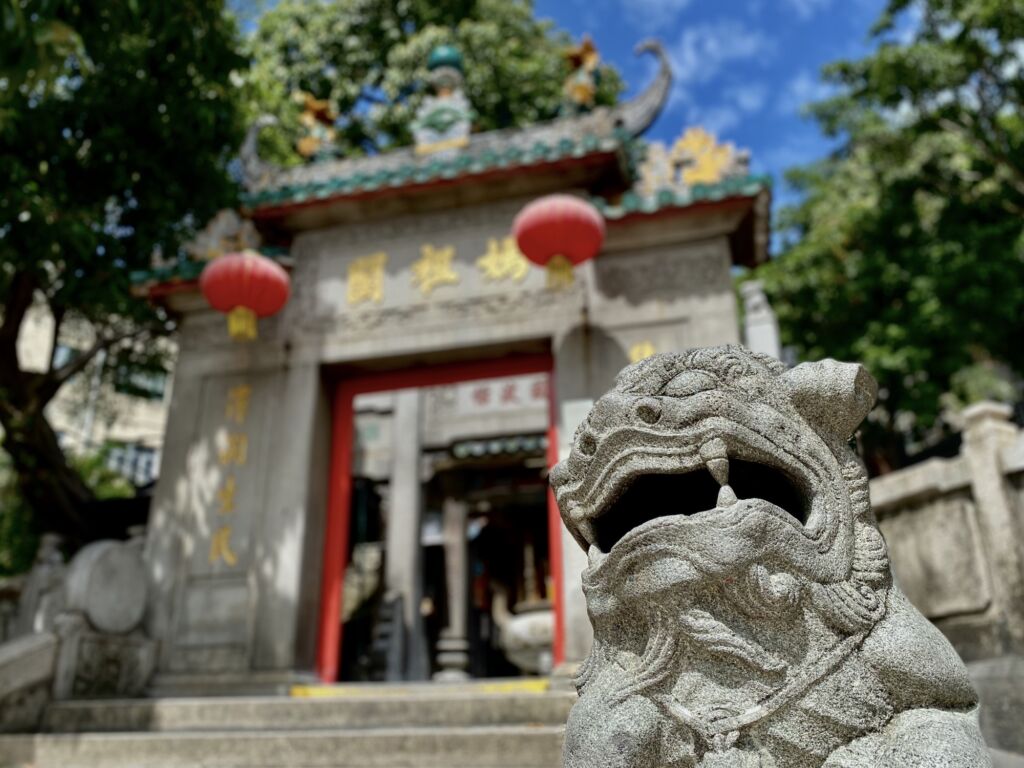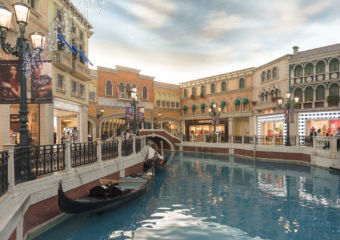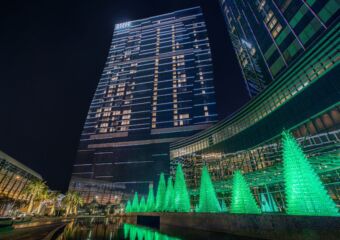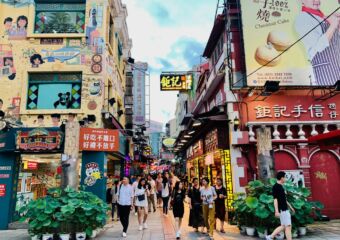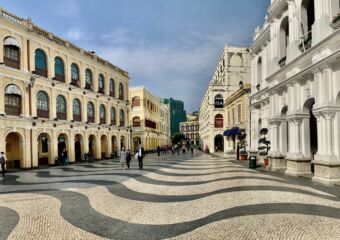There are landmarks in Macau that are tightly connected to the origins of the city. Learning more about them is a way to understand what Macau was and is. One of the most important places in the city’s history has been standing in Barra for over 500 years, witnessing all the growth and development that Macau has gone through. In 2005, it rightfully became a UNESCO World Heritage site as a part of the Historic Center of Macao. Read on to discover more about the city’s oldest temple.
Religions and Deities
Some guide books and travel websites describe A-Ma Temple as a Buddhist temple. Yet, it is neither Buddhist or Taoist. Like many Chinese places of worship, it hosts both Taoist, Buddhist, and Chinese folk deities. In Chinese religious traditions, this phenomenon is not rare. Notably, you can see altars with figurines of Buddha, Kun Iam, Confucius, and photos of ancestors altogether.
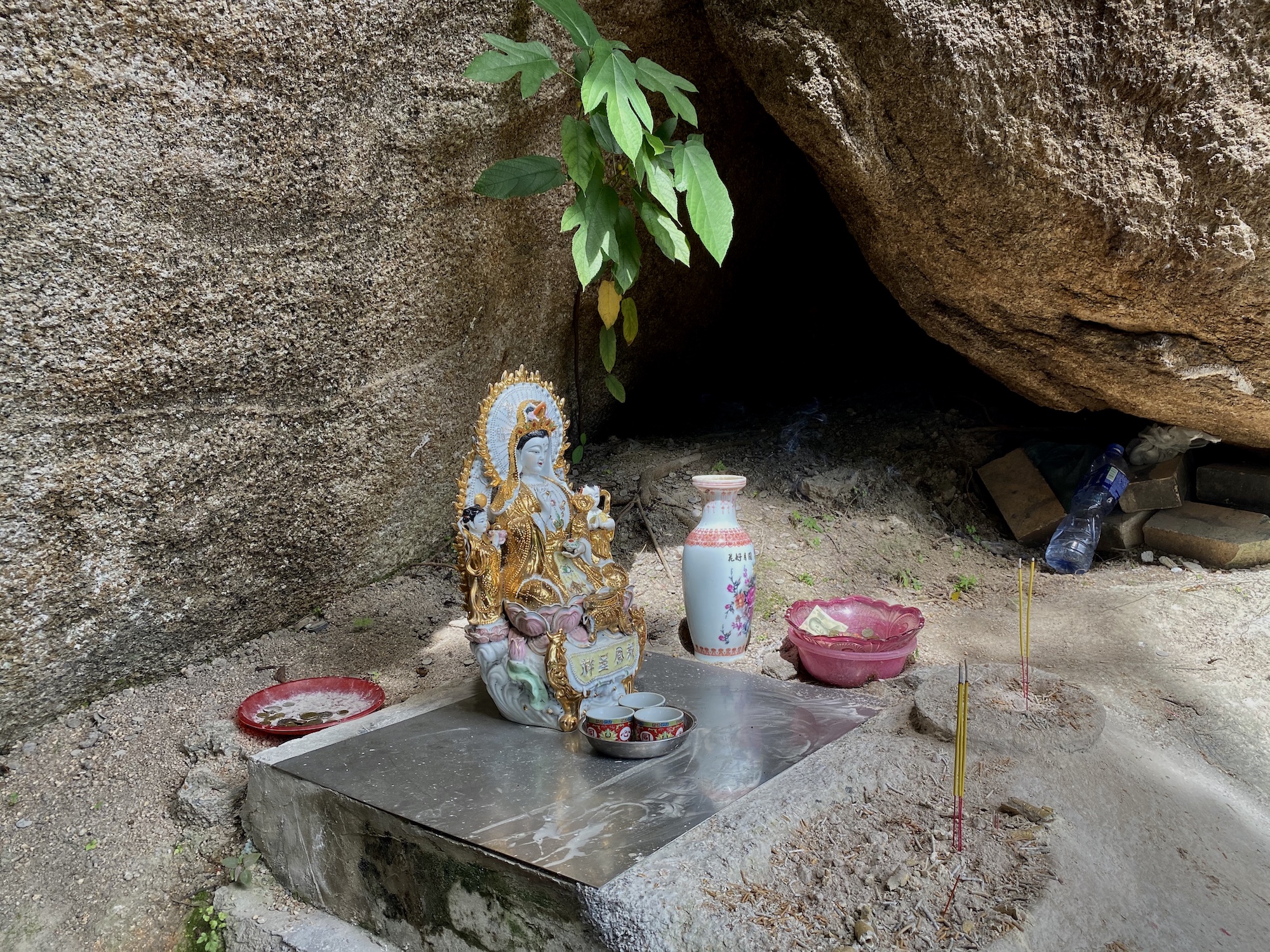
Photo credit: Ksenia Kuzmina
But the main worshipped goddess that gave the temple its name is A-Ma, also know as Mazu (in Hong Kong, you would often hear her referenced as Tin Hau). She is a patron of Macau and a guardian of seafarers. It is her statue you will find in most of the temple’s pavilions, often accompanied by other deities. It is hard to say which religion the goddess belongs to as Taoists and Buddhists revere her. Moreover, in Mainland China, Mazuism is considered a separate folk religion that goes beyond Taoism and Buddhism. All in all, from coastal regions of China, including Macau and Hong Kong to Taiwan and overseas Chinese communities in Southeast Asia, there are around 1,500 temples with altars to honor this seafarers’ protector.
What’s in a name
There are several temples in Macau that worship the goddess A-Ma, also known as Mazu and Tinhau, but the Barra temple is the one that inspired the city’s name. As you might have heard, Macau got its name due to a misunderstanding connected to the A-Ma Temple. When the Portuguese traders arrived at the peninsula, they wondered what the name of that land was. Local Fujianese people mistook it for a question about the nearby temple to which they replied: A-Ma Gau, a bay of A-Ma. Unfamiliar with the sounds of a foreign language, the Portuguese interpreted it into a word more comfortable to pronounce, Macau.
Also read: The Goddess and the City: The Legend Behind Macau’s Name
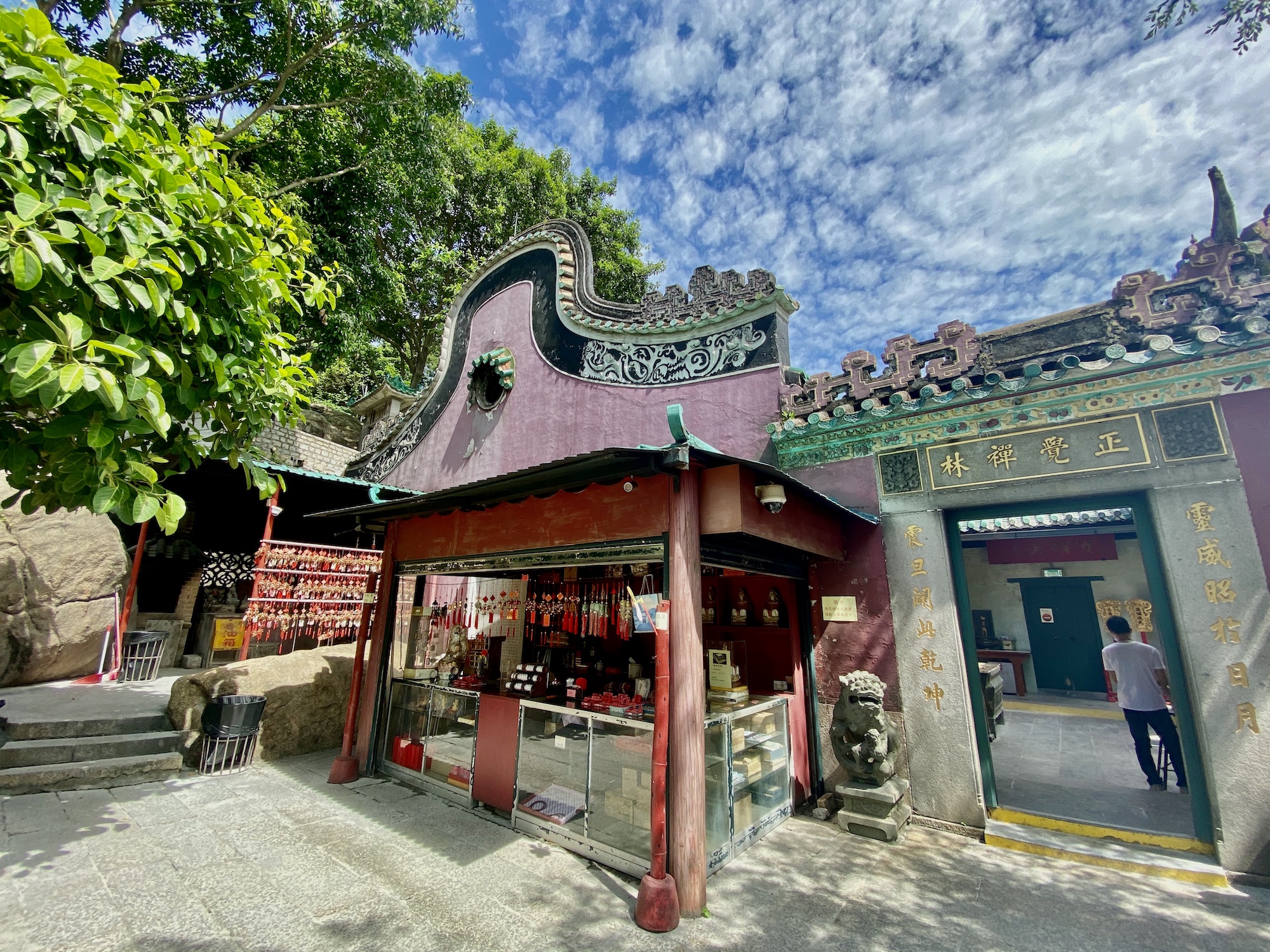
Zhengjiao Chanlin Pavilion’s entrance. Photo credit: Ksenia Kuzmina
History
Not only is A-Ma Temple is the oldest temple in Macau, but it is one of Macau’s oldest buildings. When the Portuguese sailors first set foot on the Macau Penninsula in 1553, the temple had already been situated at the Inner Harbour. Its groundwork was laid in the 15th century during the Ming dynasty, and the first pavilion was completed in 1488. At the time, the city did not even exist. Many people from the 21st century would not even recognize the territory as the land was much smaller, with three tiny settlements populated mainly with fishers. Hence, it was logical for a temple to worship Mazu, the guardian of sailors and fishermen, to have been built.
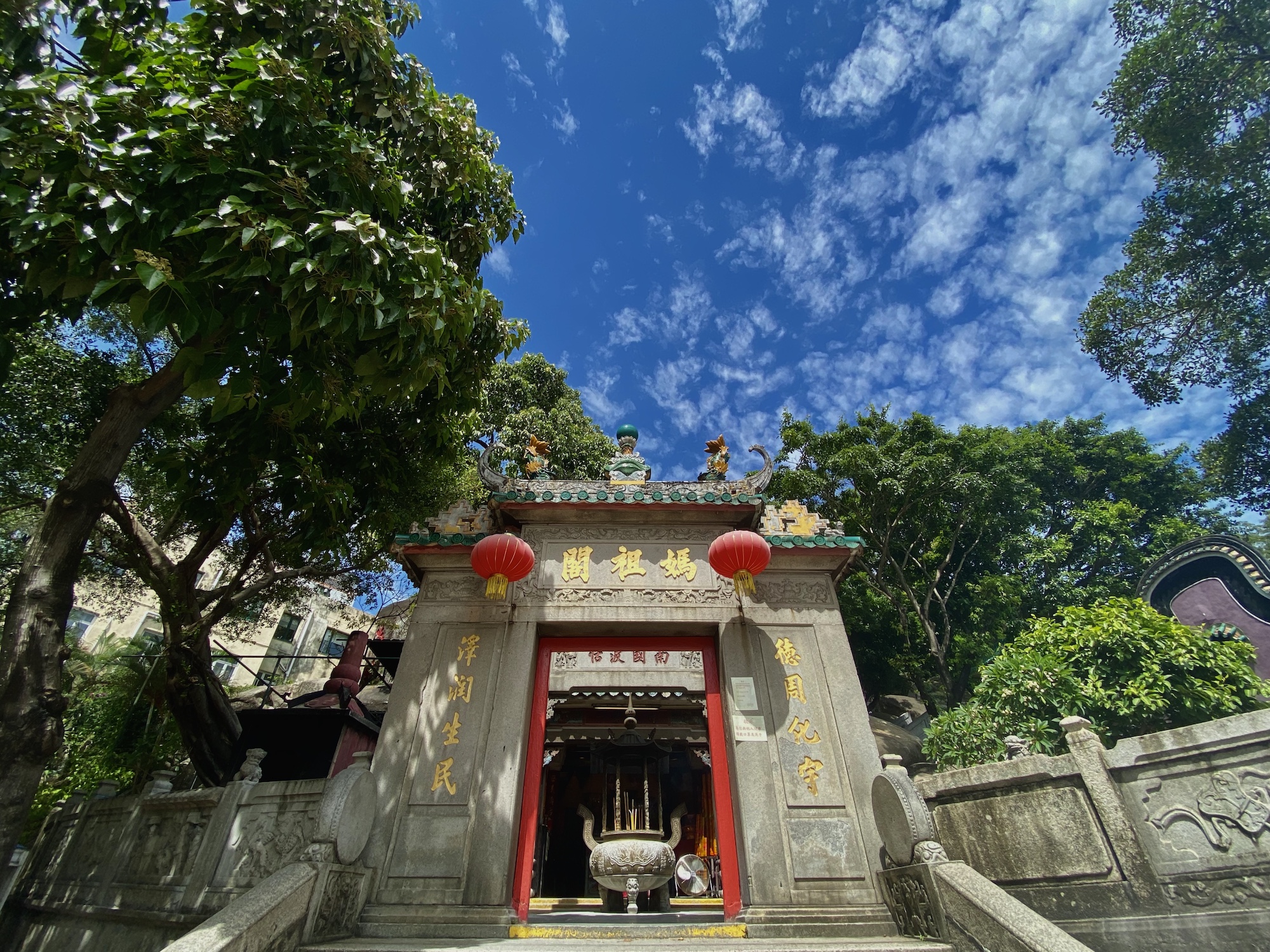
The Gate Pavilion. Photo credit: Ksenia Kuzmina
Structure
According to Chinese architectural tradition, buildings are usually constructed on flat ground facing the water, with mountains or hills guarding its rear. Although some of A-Ma Temple’s pavilions climb the Barra Hill, the main structure rests on the ground. In fact, this principle applies to all the ancient temples in Macau. But due to the land reclamation and construction, the connecting between buildings, water, and hills dispersed.
The multi-level structure climbs over the hills with its four pavilions connected with stairs and courtyards. All of them were built in different periods and the complex as we know it was finalized by 1828. Walking up and down the stairways, you would see huge rocks here and there with Chinese declarations and poems carved in stone.
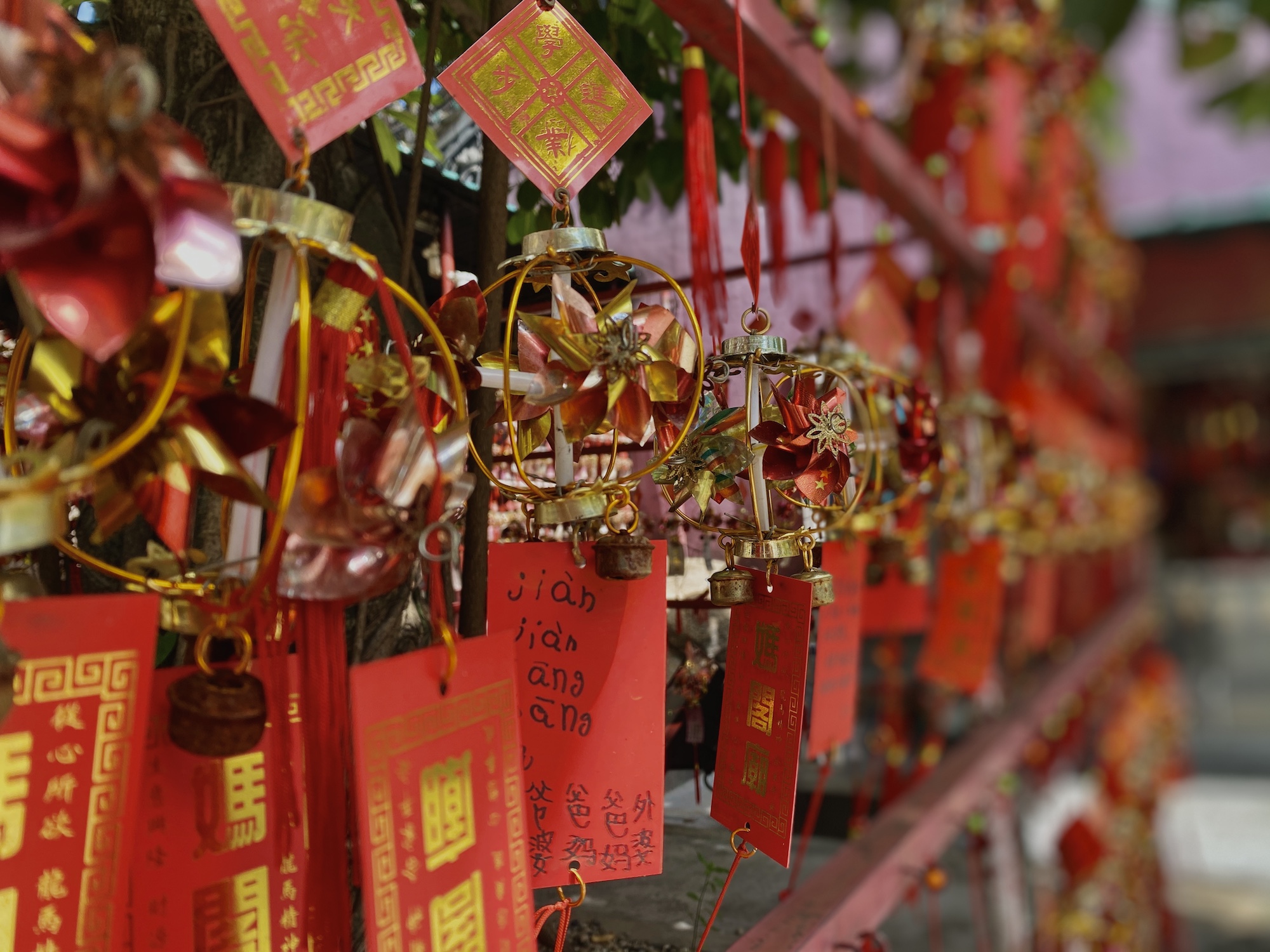
The Gate Pavillion
The first structure at the entrance is the Gate Pavillion guarded by two stone lions, “shishi”. A female lion with a cub and a male one stand on both sides of the gate to protect the house of prayer from evil spirits and harmful people. Once you enter, through the smoke coming from joss sticks, you will see the Memorial Arch with the Prayer Hall (built in 1605 and rebuilt in 1629) behind it. This pavilion is solely dedicated to A-Ma. To the right side, there is a courtyard with prayer cards, charms, and a big tree to hide from the roasting rays of the sun. Right behind the tree, you will find a rock with an over 400-year-old ship engravement. This is a lorcha, a junk boat used on the South China Sea. This type of boat is believed to have brought Mazu to Macau.
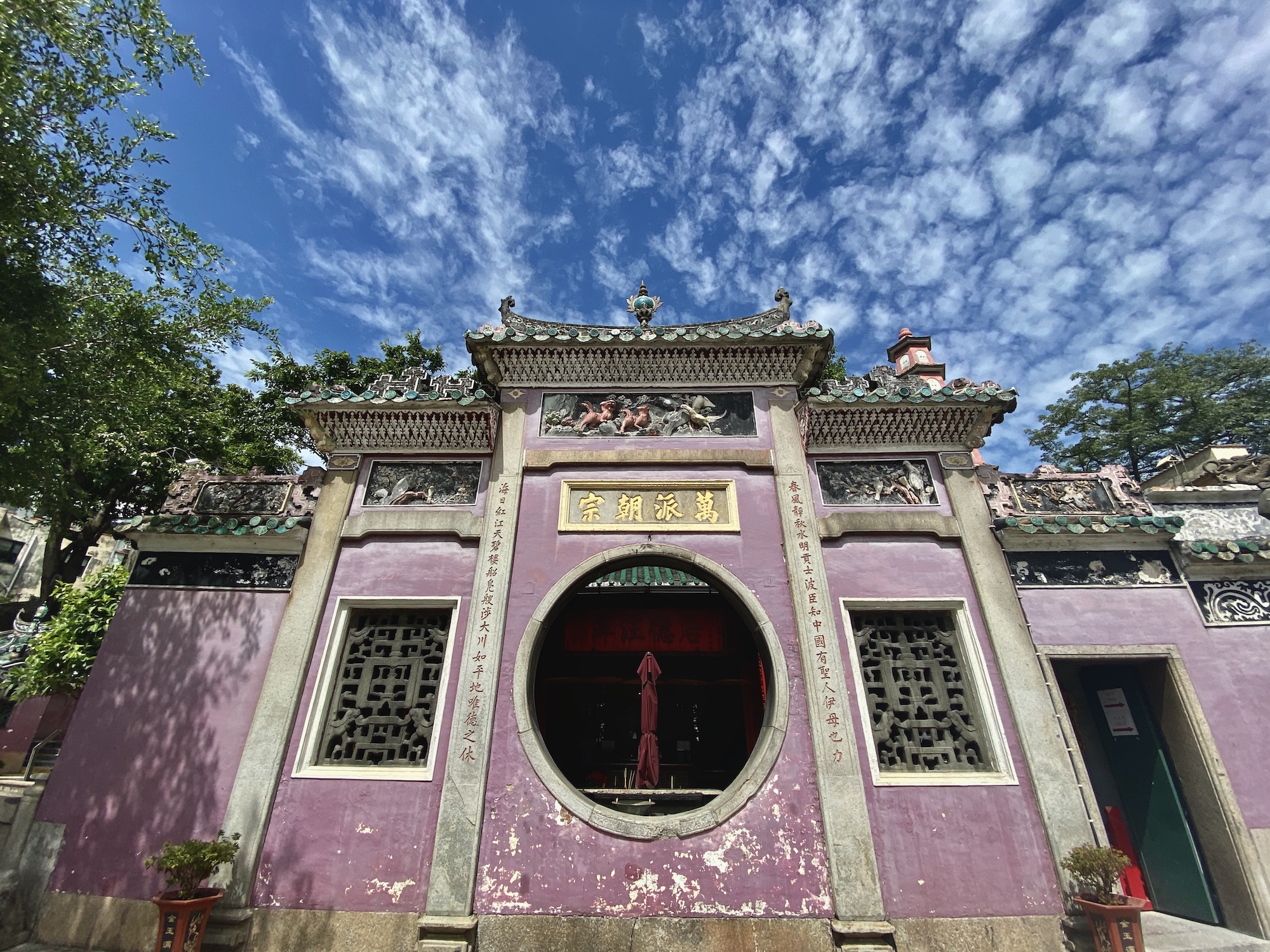
Zhengjiao Chanlin. Photo credit: Ksenia Kuzmina
Zhengjiao Chanlin
Walk through another gate, and you will find yourself in the most spacious of halls, Buddhist Zhengjiao Chanlin with three altars in the middle and incense coil cones hanging above them. A-Ma resides in the center of the altar, surrounded by two other deities–Wei To on the left and Tei Chong Wong on the right. Dressed in military uniform, Wei To is a protector of the Dharma, law, and order in Buddhism. Tei Chong Wong, with a magic mirror in one hand and a scale in the other, is the Earth Treasury Bodhisattva, responsible for dead souls.
This pavilion is the most elaborate, architecturally. A moon gate goes through the front facade of Zhengjiao Chanlin that allows visitors to see the hall from the outside. But this is not an entrance for humans as it is a door for spirits. If you look at this hall from above, you will see the roof is different from the rest of the pavilions. This curved shape is the Yingshan roof that is designed to protect the temple from fire.
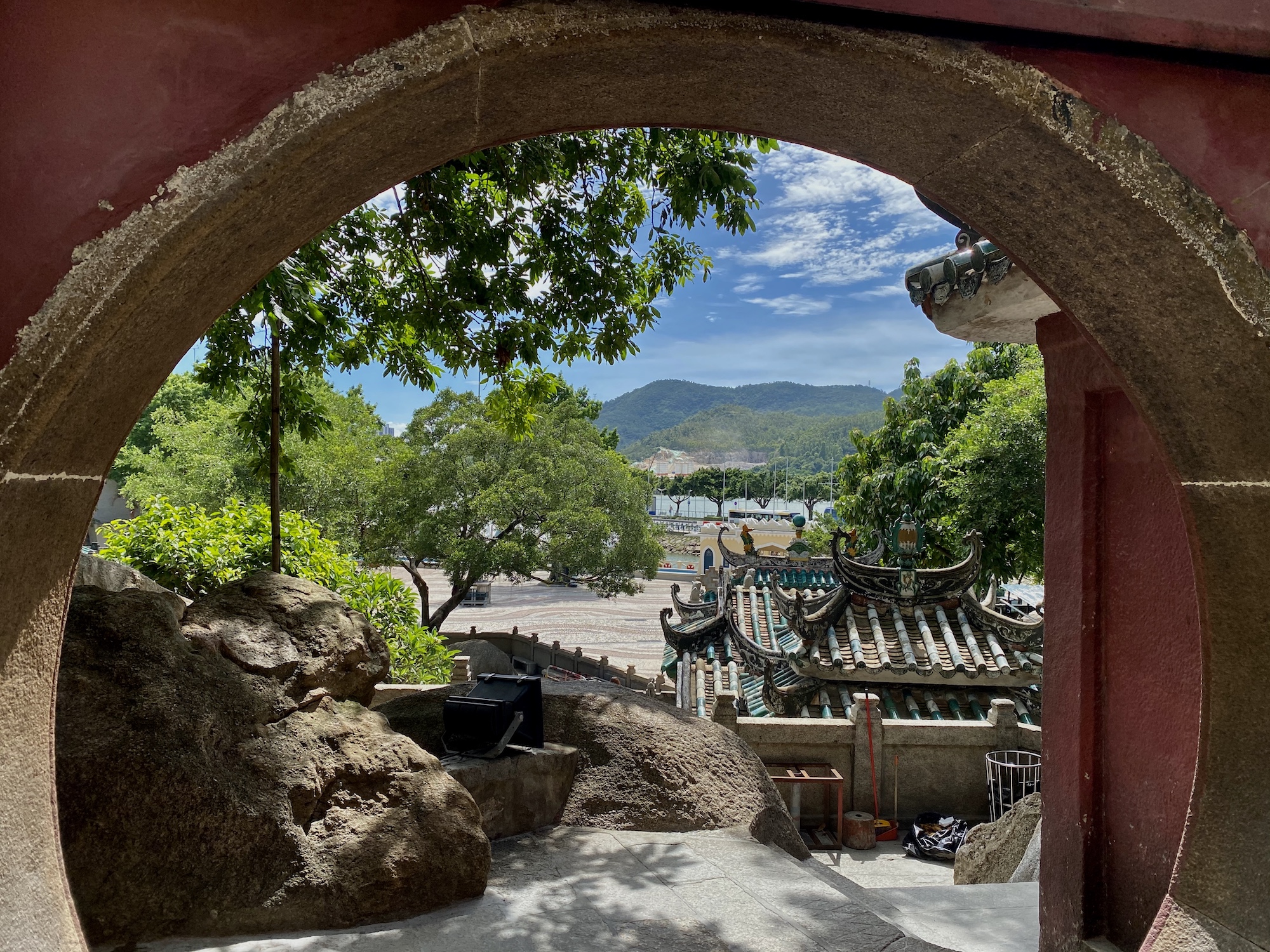
The moon gate beside the Hall of Benevolence. Photo credit: Ksenia Kuzmina
The Hall of Benevolence
Walk a few steps up, and there it is, The Hall of Benevolence, the original and oldest pavilion dedicated to Mazu. Incorporated in the Barra Hill, this structure of granite and brick hosts a small altar, the initial place of A-Ma worship. The goddess is accompanied by her four attendants carved into granite–two demonic guardians, Qianliya and Shunfeng’er, and two members of her entourage.
The Hall of Guanyin
On the right side of The Hall of Benevolence, there is another moon gate. Going through it and climbing some stairs up, you will find yourself in the fourth hall dedicated to Kun Iam, or Guanyin, a bodhisattva and the goddess of mercy and compassion. On her right, there is an idol of Iok Noi, the jade maid of childbirth. On Kun Iam’s left side, the figures of two war heroes are standing, Yue Fei and Kuan Kong.
Also read: Off the Beaten Path: Exploring Barra
A-Ma Temple Barra Square, Macau, www.wh.mo

